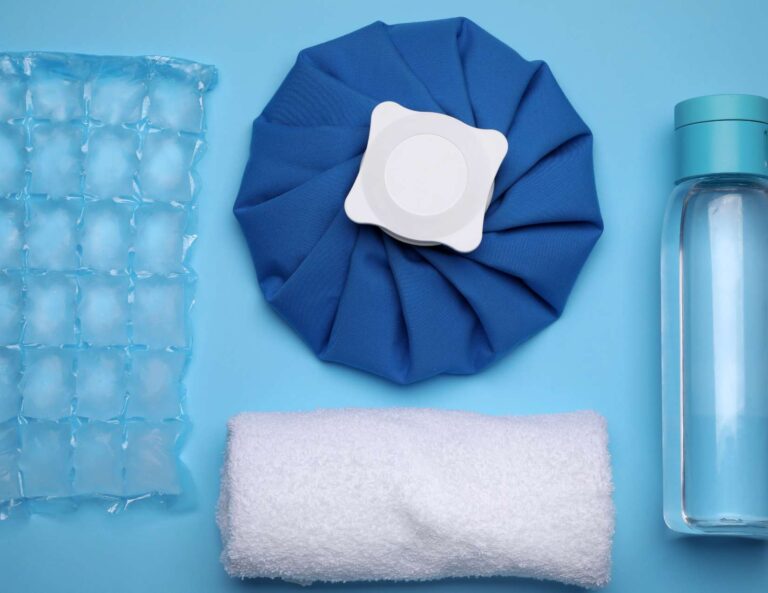How To Use A Foam Roller For Sciatica Relief
Sciatica pain can be excruciating and debilitating, making it difficult to perform even the most basic daily activities. If you suffer from sciatica, you know how important it is to find effective methods to alleviate the pain. One such method gaining popularity is using a foam roller for sciatica relief. Foam rollers are affordable and easy-to-use tools that can help relieve the pressure on your sciatic nerve. By targeting specific muscles around the lower back and hips, foam rolling can improve circulation, reduce inflammation, and promote healing.
Whether you’re pregnant, an athlete, office worker, or someone who spends long hours sitting, incorporating foam rolling into your daily routine can be a game-changer for managing your sciatica pain. In this article, we’ll take a closer look at how foam rollers work, their benefits, and how to use them effectively to ease sciatica pain.
Table of Contents
Introduction to Sciatica and Foam Rolling
Sciatica is a condition characterized by pain that radiates along the path of the sciatic nerve, which runs from the lower back down through the buttocks and into the legs. The pain can be sharp, shooting, or burning, and can be accompanied by numbness, tingling, or muscle weakness. Sciatica can be caused by a number of factors, including herniated discs, spinal stenosis, and degenerative disc disease.
Foam rolling is a form of self-myofascial release. It involves using a foam roller on the local sciatica pressure points to help release tight or sore muscles. A foam roller for sciatica can help to improve circulation, increase flexibility, and reduce muscle tension and soreness. When used correctly, foam rolling can be a highly effective way to alleviate sciatica pain and discomfort.
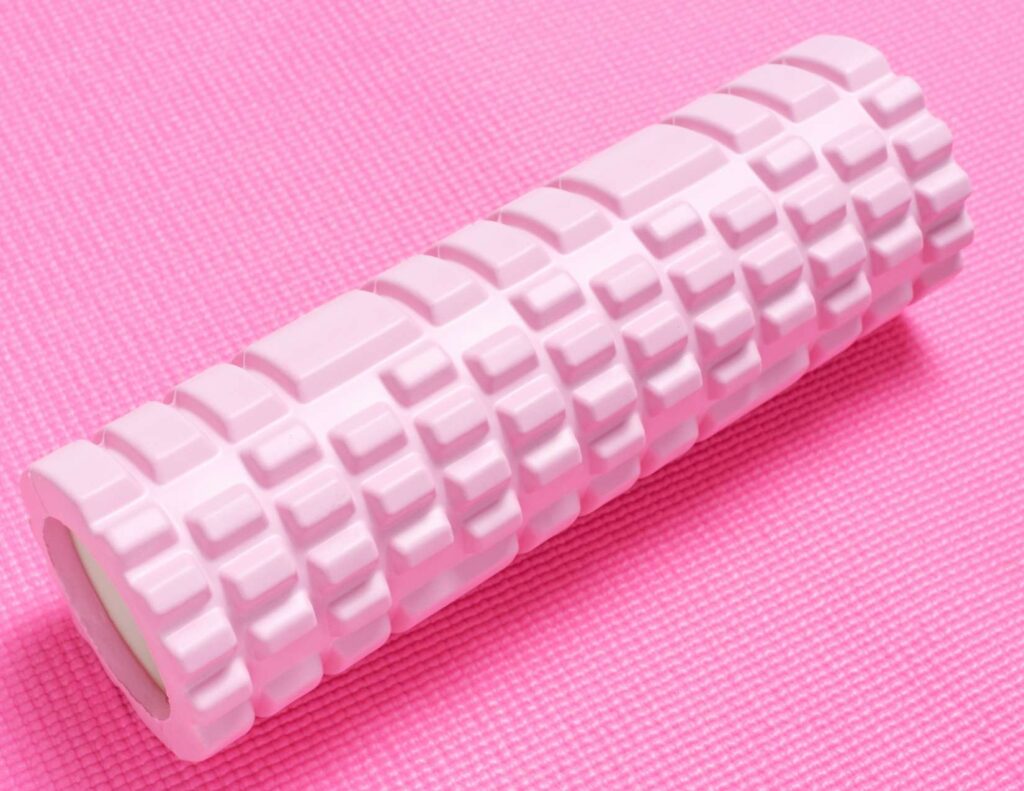
What is a Foam Roller?
A foam roller is a cylindrical piece of foam that is used for self-massage and myofascial release. Foam rollers come in a variety of sizes and densities, with some being more firm than others. The density of the foam roller you choose will depend on your individual needs and preferences.
Foam rollers can be used to target specific areas of the body, such as the back, hips, and legs. When used correctly, a foam roller for sciatica can help to break up adhesions and knots in the muscles, improve circulation, and reduce muscle soreness and tension.
Benefits of Using a Foam Roller for Sciatica
Foam rolling can provide a number of benefits for those suffering from sciatica. One of the main benefits of foam rolling is that it can help to alleviate pain and discomfort by releasing tension in the muscles surrounding the sciatic nerve. Foam rolling can also help to improve circulation and flexibility, which can help to reduce the risk of future sciatica flare-ups.
Another benefit of using a foam roller for sciatica is that it can be done at home, making it a convenient and cost-effective way to manage sciatica pain. Foam rolling can also be used in conjunction with other forms of treatment, such as physical therapy and medication, to provide comprehensive sciatica relief.

How to Choose the Best Foam Roller for Sciatica Pain
When it comes to choosing a foam roller for sciatica relief, there are a few factors to consider. The first factor to consider is the density of the foam roller. If you’re new to foam rolling or have sensitive muscles, you may want to start with a softer foam roller. If you’re more experienced or have denser muscles, a firmer foam roller may be more effective.
The size of the foam roller is another factor to consider. A larger foam roller may be more effective for targeting larger muscle groups, while a smaller foam roller may be better for targeting specific areas of the body.
Lastly, you may want to consider the texture of the foam roller. Some foam rollers have a smooth surface, while others have a textured surface. A textured foam roller can be more effective for breaking up adhesions and knots in the muscles.
Foam Rolling Techniques for Sciatica Relief
When it comes to using a foam roller for sciatica relief, there are a few techniques that can be particularly effective. Here are a few foam rolling techniques to try:

Glute Foam Rolling
To foam roll the glutes, sit on the foam roller with your feet flat on the ground and your hands behind you for support. Cross your right ankle over your left knee, and then roll back and forth over your right glute. Repeat on the other side.
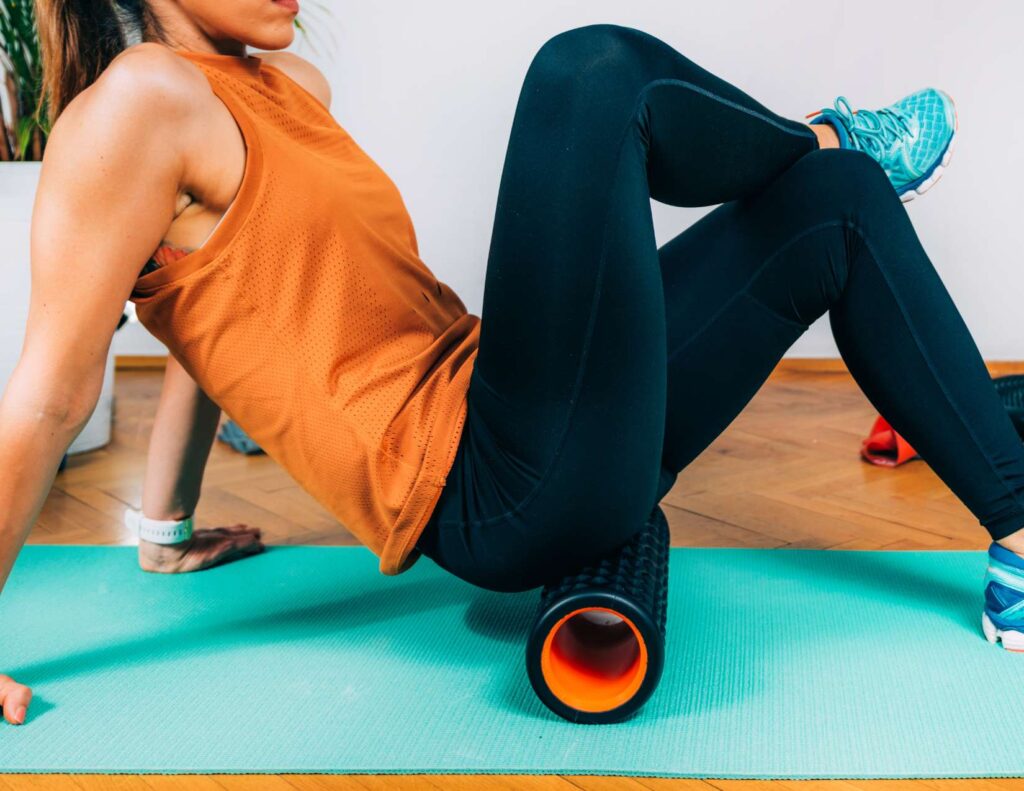
Piriformis Foam Rolling
To foam roll the piriformis muscle, sit on the foam roller with your left leg crossed over your right knee. Lean to the left, placing your left hand on the ground for support. Roll back and forth over your left glute. Repeat on the other side.
*You can also use a foam roller for piriformis syndrome during pregnancy.
And if you’re not really sure what the difference is between piriformis syndrome and sciatica, my article on piriformis syndrome vs. sciatica can help you figure that out!
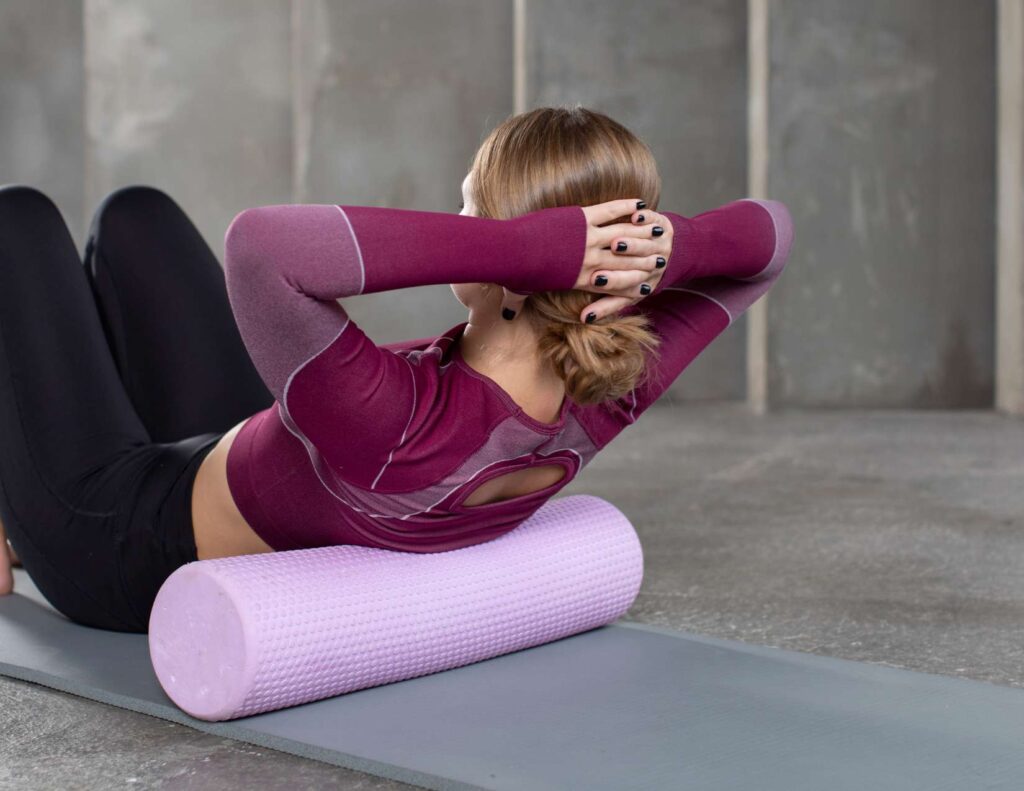
Lower Back Foam Rolling
To foam roll the lower back, lie on your back with the foam roller under your lower back. Bending your knees, place your feet flat on the ground. Roll up and down your lower back, stopping at any areas that feel particularly tight or sore.
Common Mistakes to Avoid While Foam Rolling for Sciatica
While foam rolling can be highly effective for sciatica relief, there are a few common mistakes to avoid. One of the most common mistakes is rolling too quickly over the muscles. To get the most benefit from foam rolling, it’s important to roll slowly and deliberately over the muscles.
Another common mistake is using too much pressure. While it may be tempting to apply a lot of pressure to the muscles, this can actually cause more harm than good. Instead, start with a lighter pressure and gradually increase it as you become more comfortable with foam rolling.
Lastly, it’s important to avoid foam rolling over areas that are inflamed or injured. This can exacerbate the problem and make the pain worse.
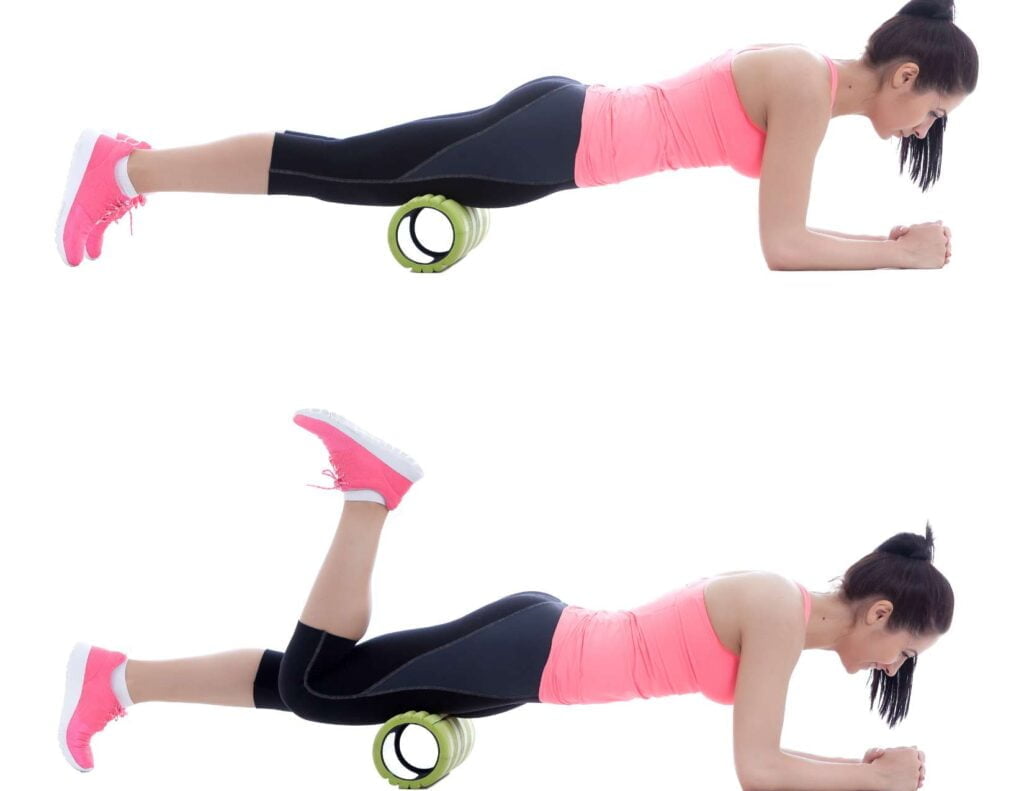
Stretches to Complement Foam Rolling for Sciatica
In addition to foam rolling, there are a number of pregnancy sciatica stretches that can be highly effective for relief. Here are a few stretches to try:
Figure Four Stretch
To do the figure four stretch, lie on your back with your knees bent and your feet flat on the ground. Cross your right ankle over your left knee, and then pull your left knee towards your chest. Hold for 15-30 seconds, and then repeat on the other side.
Knee to Chest Stretch
To do the knee to chest stretch, lie on your back with your knees bent and your feet flat on the ground. Bring your right knee towards your chest, and then hold onto your knee with both hands. Hold for 15-30 seconds, and then repeat on the other side.
Cat-Cow Stretch
To do the cat-cow stretch, start on your hands and knees with your wrists directly under your shoulders and your knees directly under your hips. Inhale as you arch your back and lift your head towards the ceiling, and then exhale as you round your spine and tuck your chin towards your chest. Repeat 10-15 times.
Precautions and Contraindications for Foam Rolling with Sciatica
While a foam roller for sciatica relief can be highly effective, it’s important to take certain precautions and avoid foam rolling in certain situations. If you have a herniated disc or spinal stenosis, foam rolling may not be appropriate for you. It’s also important to avoid foam rolling over areas that are inflamed or injured.
If you’re new to foam rolling or have a medical condition, it’s always a good idea to speak with your healthcare provider before beginning a foam rolling routine.
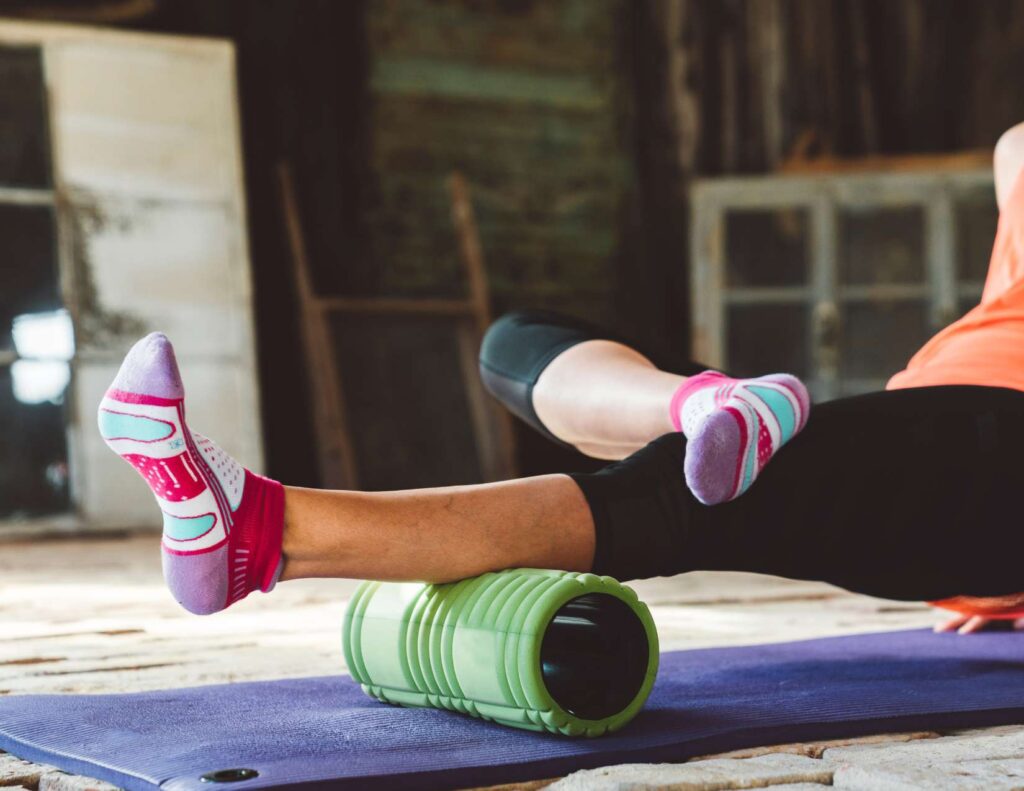
Frequently Asked Questions about Foam Rolling for Sciatica
Is foam rolling safe for sciatica?
Foam rolling can be safe and effective for sciatica relief, but it’s important to take certain precautions and avoid foam rolling in certain situations. If you have a medical condition or are new to foam rolling, it’s always a good idea to speak with your healthcare provider before beginning a foam rolling routine.
How often should I foam roll for sciatica relief?
The frequency of foam rolling for sciatica relief will depend on your individual needs and preferences. Some people may benefit from foam rolling daily, while others may only need to foam roll a few times per week.
Can foam rolling make sciatica worse?
While foam rolling can be highly effective for sciatica relief, it’s important to avoid foam rolling over areas that are inflamed or injured. If you experience increased pain or discomfort while foam rolling, it may be a sign that you’re applying too much pressure or foam rolling over an inflamed area. You should also avoid these sciatica exercises if you are experiencing a flare up.
Can I use a foam roller for sciatica during pregnancy?
Yes, you can use a foam roller for sciatica during pregnancy. However, it is important to make sure that the exercises are tailored to your individual needs and that you’re using proper form. It might be best to consult with a physical therapist or chiropractor who specializes in pregnancy before starting any exercise program so they can provide guidance on which exercises are best suited for your condition. Additionally, always remember to listen to your body during the exercises and if anything feels uncomfortable or causes pain it is best to stop immediately and consult with a medical professional.
Conclusion and Final Thoughts
A foam roller for sciatica can be a highly effective way to alleviate pain and discomfort. By choosing the right foam roller, using proper foam rolling techniques, and complementing foam rolling with stretches, you can effectively manage your sciatica symptoms at home. Remember to take certain precautions and avoid foam rolling in certain situations, and always speak with your healthcare provider before beginning a foam rolling routine.







